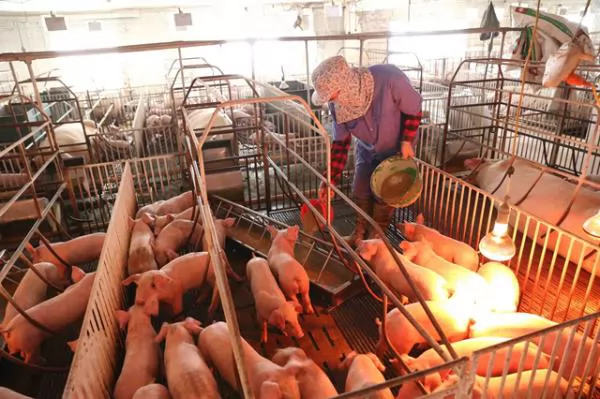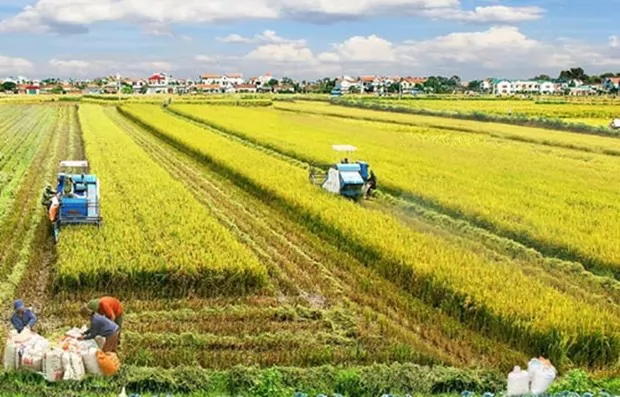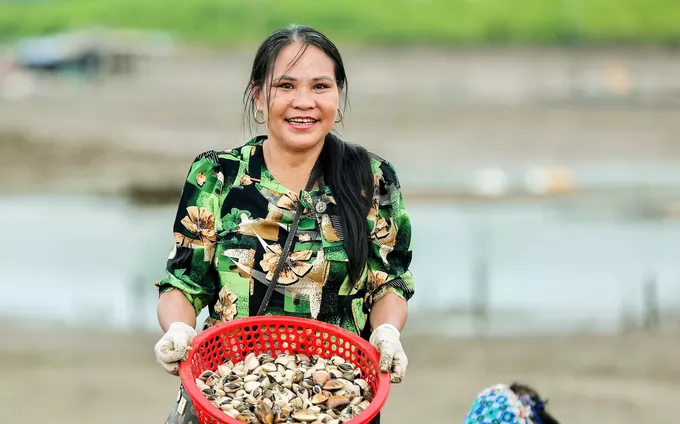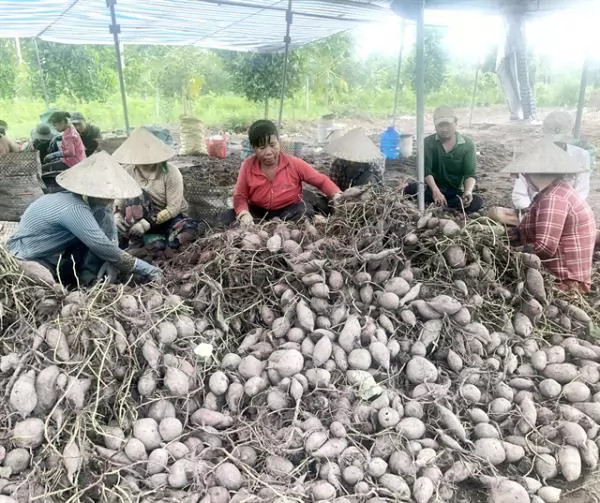Hà Nội needs to accelerate farm economy

The pig farm of Phùng Văn Thuỵ's family in Cổ Đô Commune of Ba Vì District. VNS Photo Vũ Sinh
--Ngọc Ánh
HÀ NỘI – Hà Nội's farm economy in suburban districts has developed well in both quantity and quality with high turnover and creating jobs for thousands of workers in recent years.
However, this area still has faced many barriers in terms of land, capital, human resources, technology application and product consumption that requires the agriculture sector, localities and farm owners to make more efforts to create a driving force for the development of farm economy.
Đặng Thị Tươi, head of the economic section of Ứng Hoà District, said the development of the farm economy in the district had seen positive changes in production and trading with several commodity products meeting market requirements which helped bring high economic efficiency.
Many farms have been producing animal breeds and seedlings to supply to other farmers in the district, according to Tươi.
The whole district has 201 farms with total revenue of nearly VNĐ2.2 trillion (US$95 million) per year and total profit of VNĐ412 billion ($18 million).
Meanwhile, Thạch Thất District has 144 farms, many of which specialise in commodity production and apply high technology.
Many farms have created brand names for their agricultural products.
“Thanks to the development of the farm economy model, the living standards of many households have improved and the income of rural labourers has been significantly increased,” said Nguyễn Kim Loan, vice Chairwoman of Thạch Thất District.
According to statistics from the Hà Nội Department of Agriculture and Rural Development, by the end of last year, Hà Nội had 3,150 farms, 500 more than in 2015.
The farms have supplied to Hà Nội hundreds of thousands of tonnes of food, meat, vegetables and fruit every year.
Incentives are needed
However, farm economic development still faces many difficulties.
Hà Nội currently has only 178 farms which have been granted certificates of farm economic model. And most farms are small scale, with each farm about 1.5ha on an average.
At present, resources to invest in production mainly come from households’ own capital. The professional qualifications of farm owners have not met the increasing requirements of the market.
Nguyễn Văn Thanh, director of Hoà Mỹ Animal Breeding Co-operative in Ứng Hoà District, said: “At present, all assets on the farmland such as animal lodgings, animals and trees were not evaluated for bank loans because our co-operative and other many farms are not yet certified as a farm economic model.”
Chu Phú Mỹ, director of the Department of Agriculture and Rural Development, said that to support the farm economy, the department has directed agencies to co-ordinate with districts and towns to build models of technical transfer and organise training on production, preservation and processing techniques and management skills as well as provide market information to farm owners.
The department has been working to promote supply-demand connections.
The department has given financial assistance for trading and branding promotion to the farms which were selected in the One Commune-One Product (OCOP) programme, said Mỹ.
In terms of loans, the Hà Nội Agricultural Extension Fund has created conditions for farms to access loans up to VNĐ400-500 million ($17,000-21,000) if they have an effective business and production plan, said Mỹ.
The department also works with agencies to promote the issuance of land use right certificates to farms as a basis for farms to borrow money from banks and other credit institutions, he added. – VNS
Maybe you are interested

Australian, Vietnamese experts develop new rice variety to tackle climate change
SunRice, Australia's largest rice supplier, will partner with Australian and Vietnamese researchers to develop a new variety of rice that helps farmers in the Mekong Delta adapt to climate change and offers a fresh opportunity to increase exports from the

A female farmer's revenue exceeds VND 150 billion
Compared to 2023, the highest revenue of a farmer is slightly more than VND 10 billion, that is, Nguyen Thi Bien, who specializes in raising clams in Thanh Hoa province.

Mekong Delta authorities seek to boost farm produce sales amid transport restrictions
HCM CITY - Authorities in the Cửu Long (Mekong) Delta are taking measures to boost the sales of agricultural products as travel restrictions to prevent the spread of COVID-19 affect them.





